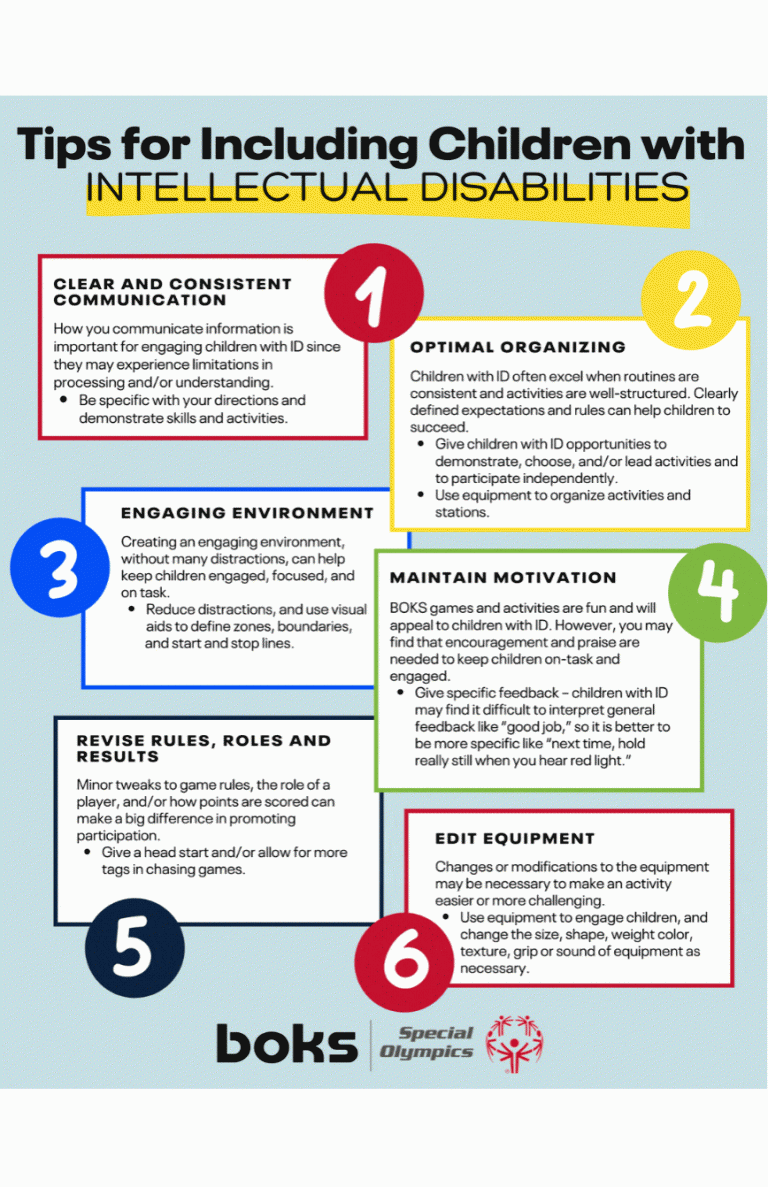TIPS FOR INCLUDING CHILDREN WITH INTELLECTUAL DISABILITIES
01/05/22


Clear and Consistent Communication
How you communicate information is important for engaging children with Intellectual Disabilities (ID) since they may experience limitations in processing and/or understanding.
- Be specific with your directions and demonstrate skills and activities.

Optimal Organizing
Children with ID often excel when routines are consistent and activities are well-structured. Clearly defined expectations and rules can help children to succeed.
- Give children with ID opportunities to demonstrate, choose, and/or lead activities and to participate independently.
- Use equipment to organize activities and stations.

Engaging Environment
Creating an engaging environment, without many distractions, can help keep children engaged, focused, and on task.
- Reduce distractions, and use visual aids to define zones, boundaries, and start and stop lines.

Maintain Motivation
BOKS games and activities are fun and will appeal to children with ID. However, you may find that encouragement and praise are needed to keep children on-task and engaged.
- Give specific feedback – children with ID may find it difficult to interpret general feedback like “good job,” so it is better to be more specific like “next time, hold really still when you hear red light.”

Revise Rules, Roles and Results
Minor tweaks to game rules, the role of a player, and/or how points are scored can make a big difference in promoting participation.
- Give a head start and/or allow for more tags in chasing games.

Edit Equipment
Changes or modifications to the equipment may be necessary to make an activity easier or more challenging.
- Use equipment to engage children, and change the size, shape, weight color, texture, grip or sound of equipment as necessary.
Download our “Tips for Including Children with Intellectual Disabilities” Poster in the BOKS Trainer Hub.


